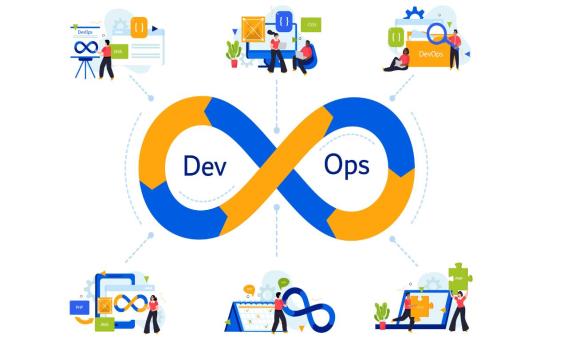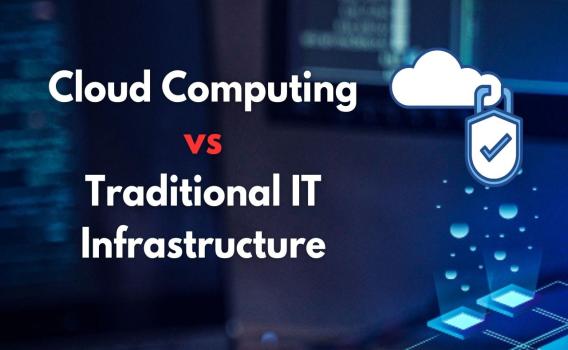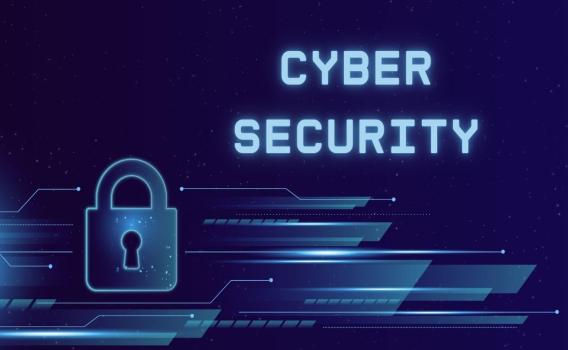


31-01-2024
In the ever-evolving digital landscape, the user interface (UI) stands as the gateway between users and technology, shaping how we interact with applications, websites, and software. UI design, a delicate blend of creativity and functionality, plays a pivotal role in crafting seamless and enjoyable user experiences. Join us as we embark on a journey to break down the intricate elements of UI design, exploring the fundamental principles, key components, best practices, and the art of balancing aesthetics with usability. Whether you're a seasoned designer, an aspiring UI enthusiast, or simply curious about the magic behind visually appealing interfaces, let's unravel the elements that contribute to the heart of UI design.
UI design is not just about creating visually pleasing layouts; it's about orchestrating an intuitive and efficient interaction between users and digital interfaces. The essence of UI design lies in fostering a harmonious marriage between aesthetics, functionality, and user satisfaction.
1. Clarity and Consistency:
Clarity: Ensuring that elements, actions, and information are clear and easily understandable.
Consistency: Maintaining uniformity in design elements, layouts, and interactions across the entire interface.
2. Hierarchy:
3. Feedback:
4. Simplicity:
1. Typography:
2. Color Palette:
3. Icons and Imagery:
4. Layout and Grids:
5. Buttons and Interactive Elements:
6. Forms and Input Fields:
7. microinteractions:
1. User-Centered Design:
2. Responsive Design:
3. Accessibility:
4. Scannability:
1. Apple iOS Interface:
2. Google Material Design:
3. Airbnb Website:
Challenges:
Device Fragmentation: Designing for a multitude of devices and screen sizes poses challenges in maintaining a consistent and optimal user experience.
Overemphasis on Aesthetics: Focusing too much on visual appeal without considering usability can lead to a disjointed and frustrating user experience.
Innovations:
Augmented Reality (AR) and Virtual Reality (VR): Integrating AR and VR elements into UI design opens up new possibilities for immersive and engaging user experiences.
Voice User Interfaces (VUI): The rise of voice-controlled interfaces introduces new challenges and opportunities for UI designers to create intuitive and natural interactions.
As technology continues to advance, UI design is poised to evolve with new trends and innovations. From the integration of AI-driven interfaces to the exploration of 3D and spatial design, the future promises exciting possibilities for UI designers.
In conclusion, UI design is a multifaceted discipline that combines artistic flair with functional precision. Each element, from typography to interactive buttons, contributes to the overall narrative of the user experience. As we navigate the intricacies of UI design, the key lies in finding the delicate balance between aesthetics and usability. Whether you're a UI designer refining your craft or a curious observer peeking behind the digital curtain, the elements discussed here form the building blocks of interfaces that captivate, engage, and seamlessly connect users with the digital world. So, let's continue to unravel the magic of UI design, one element at a time.


31-01-2024
In the fast-paced realm of software development, agility, and efficiency are not just buzzwords; they are the driving forces behind successful projects and thriving businesses. Enter DevOps – a cultural and operational paradigm that seeks to break down silos, foster collaboration, and automate processes to deliver high-quality software at speed. In this comprehensive guide, we embark on a journey into the heart of DevOps, exploring its foundations, key principles, benefits, and the crucial tools that make it all possible. Whether you're a seasoned developer, an operations specialist, or simply curious about the buzz surrounding DevOps, let's unravel the intricacies and demystify DevOps 101.
At its core, DevOps is not just a set of tools; it's a cultural shift that aims to bridge the gap between development and operations teams. Traditionally, these teams operated in isolation, often resulting in friction, delayed releases, and a lack of collaboration. DevOps seeks to foster a collaborative and iterative approach, where development, testing, deployment, and operations are seamlessly integrated into a continuous cycle.
1. Collaboration and Communication:
DevOps emphasizes breaking down silos and promoting collaboration between development, operations, and other stakeholders. Effective communication ensures that everyone is on the same page, working towards common goals.
2. Automation:
Automation is a linchpin of DevOps. By automating repetitive tasks, such as testing, deployment, and infrastructure provisioning, teams can achieve efficiency, consistency, and a faster time-to-market.
3. Continuous Integration and Continuous Deployment (CI/CD):
CI/CD pipelines are the backbone of DevOps. Continuous Integration involves regularly merging code changes into a shared repository, while Continuous Deployment automates the process of deploying code changes into production.
4. Infrastructure as Code (IaC):
IaC involves managing and provisioning infrastructure through code, enabling the automation of infrastructure tasks. This ensures consistency, reduces manual errors, and facilitates scalability.
5. Monitoring and Feedback:
DevOps places a strong emphasis on real-time monitoring and feedback loops. Continuous monitoring allows teams to detect issues early, gather insights, and iterate on improvements.
1. Faster Time-to-Market:
DevOps accelerates the software development lifecycle, enabling rapid releases and reducing time-to-market. This agility is crucial in competitive industries where staying ahead is paramount.
2. Improved Collaboration:
By breaking down silos and fostering collaboration, DevOps promotes a culture of shared responsibility. Developers and operations teams collaborate seamlessly, leading to a more streamlined workflow.
3. Enhanced Quality:
Automation of testing and deployment processes ensures consistency and reduces the likelihood of errors. This results in higher-quality software that meets user expectations.
4. Increased Efficiency and Cost Savings:
Automation and efficient collaboration translate to reduced manual effort, lower operational costs, and optimal resource utilization. DevOps is not just about speed but also about resource efficiency.
5. Adaptability and Scalability:
DevOps practices are designed to be adaptable to different project sizes and types. Whether it's a small startup or a large enterprise, DevOps principles can scale to meet the unique needs of each.
1. Version Control Systems:
Tools like Git enable version control, allowing multiple developers to collaborate on projects simultaneously without conflicts.
2. Continuous Integration/Continuous Deployment (CI/CD) Tools:
Jenkins, Travis CI, and GitLab CI are examples of CI/CD tools that automate the build, test, and deployment processes.
3. Configuration Management Tools:
Puppet, Chef, and Ansible automate the provisioning and configuration of infrastructure, ensuring consistency across environments.
4. Containerization and Orchestration:
Docker provides containerization, while Kubernetes handles container orchestration, allowing for scalable and portable deployments.
5. Monitoring and Logging Tools:
Prometheus, ELK Stack (Elasticsearch, Logstash, Kibana), and Splunk assist in real-time monitoring, log analysis, and performance tracking.
1. Netflix:
Netflix embraced DevOps to manage its vast streaming platform. Continuous deployment and automated testing allow Netflix to roll out updates seamlessly, ensuring a smooth user experience.
2. Etsy:
Etsy, the e-commerce platform, attributes its success to DevOps practices. Continuous deployment enables Etsy to release code changes multiple times a day, responding quickly to market demands.
3. Amazon:
Amazon's transformation into a cloud computing giant, with Amazon Web Services (AWS), is a testament to the scalability and efficiency achieved through DevOps practices.
Challenges:
Resistance to Change: Introducing a DevOps culture may face resistance from teams accustomed to traditional workflows.
Tool Overload: The abundance of DevOps tools can be overwhelming. Selecting the right tools that align with organizational goals is crucial.
Cultural Shift: Achieving a cultural shift towards collaboration and shared responsibility requires time and commitment.
Best Practices:
Start Small, Iterate: Begin with a pilot project to introduce DevOps practices gradually, gathering feedback and making iterative improvements.
Focus on Culture: DevOps is as much about culture as it is about tools. Foster a collaborative and open culture that values continuous improvement.
Automate Thoughtfully: Identify repetitive and time-consuming tasks for automation, but ensure thoughtful implementation to avoid unnecessary complexity.
As technology evolves, so does DevOps. The future promises further integration of artificial intelligence (AI) and machine learning (ML) into DevOps processes, enhancing predictive analytics, anomaly detection, and automation. The principles of DevOps will continue to underpin the transformation of software development and IT operations, shaping the way organizations deliver value to their users.
In conclusion, DevOps is not just a set of practices; it's a mindset that cultivates collaboration, automation, and continuous improvement. Whether you're a developer, an operations specialist, or a leader steering an organization towards digital excellence, embracing the DevOps mindset can unlock new possibilities. DevOps is not a destination; it's a journey of perpetual enhancement, where teams collaboratively pave the way for innovation, efficiency, and a future where software delivery aligns seamlessly with business objectives. As we navigate the ever-evolving landscape of technology, the DevOps journey stands as a beacon, guiding us towards a culture of agility, resilience, and continuous evolution.


31-01-2024
In the ever-expanding landscape of technology, two giants stand at the forefront of digital architecture – Cloud Computing and Traditional IT Infrastructure. As organizations grapple with the decision of choosing the right technological backbone, a thorough understanding of the strengths, weaknesses, and nuances of each is paramount. Join us on this journey as we delve into the comparison between Cloud Computing and Traditional IT Infrastructure, exploring the intricacies, benefits, challenges, and the factors that influence the choice between these two technological paradigms.
Traditional IT Infrastructure, often referred to as on-premises infrastructure, represents the conventional model of managing computing resources within the physical confines of an organization's premises. This approach involves investing in and maintaining servers, storage, networking equipment, and other hardware within dedicated data centers owned and operated by the organization.
Pros of Traditional IT Infrastructure:
Control and Security: Organizations have direct control over their hardware and infrastructure, allowing them to implement customized security measures based on specific needs and compliance requirements.
Predictable Costs: With a capital expenditure model, organizations can predict and budget for hardware and maintenance costs upfront, providing financial predictability.
Customization: On-premises solutions allow for tailor-made configurations and setups to meet unique business requirements, ensuring a personalized IT environment.
Cons of Traditional IT Infrastructure:
High Initial Costs: Acquiring and setting up physical hardware involves significant upfront costs, including the purchase of servers, networking equipment, and the establishment of data centers.
Scalability Challenges: Scaling up or down often requires substantial lead time and investment, making it challenging to respond swiftly to changing business needs.
Maintenance Overhead: Organizations bear the responsibility of maintaining and updating hardware, ensuring security patches, and managing the overall infrastructure lifecycle.
In stark contrast to traditional IT infrastructure, Cloud Computing delivers computing services over the internet, eliminating the need for organizations to own and manage physical hardware. Cloud services are provided by third-party vendors who own and operate data centers, offering on-demand access to a shared pool of computing resources.
Pros of Cloud Computing:
Cost Efficiency: Cloud services operate on a pay-as-you-go model, allowing organizations to pay only for the resources they consume. This eliminates the need for significant upfront investments.
Scalability: Cloud computing provides unparalleled scalability, allowing organizations to scale resources up or down based on demand. This agility is particularly beneficial for handling variable workloads.
Managed Services: Cloud providers handle the maintenance, security, and updates of the underlying infrastructure, freeing organizations from the operational overhead associated with traditional IT management.
Cons of Cloud Computing:
Security Concerns: While cloud providers implement robust security measures, concerns about the security of sensitive data stored in the cloud persist, making some organizations hesitant to migrate critical workloads.
Dependency on Internet Connectivity: Access to cloud services relies on internet connectivity. Organizations in remote or low-connectivity areas may face challenges in utilizing cloud resources effectively.
Potential for Vendor Lock-in: Choosing a specific cloud provider may lead to vendor lock-in, making it challenging to migrate services seamlessly to another provider or back to on-premises infrastructure.
1. Cost Considerations:
Traditional IT Infrastructure: Initial costs can be high, but organizations have more predictable, upfront expenses.
Cloud Computing: Operates on a pay-as-you-go model, offering cost flexibility. However, long-term costs may accumulate, especially for consistently high workloads.
2. Scalability and Flexibility:
Traditional IT Infrastructure: Scalability is limited, and significant lead time and investment are required for expansion.
Cloud Computing: Offers unparalleled scalability, allowing organizations to adapt quickly to changing workloads and requirements.
3. Control and Customization:
Traditional IT Infrastructure: Provides full control over hardware and configurations, enabling customized setups.
Cloud Computing: Involves relinquishing some control to the cloud provider. Customization is possible but within the framework provided by the chosen service.
4. Maintenance and Operational Overhead:
Traditional IT Infrastructure: Requires organizations to manage and maintain hardware, leading to significant operational overhead.
Cloud Computing: Cloud providers handle maintenance, updates, and security, reducing operational burden on organizations.
5. Security and Compliance:
Traditional IT Infrastructure: Allows organizations to implement customized security measures and ensures data remains within the organization's physical boundaries.
Cloud Computing: Relies on cloud providers for security. While providers implement robust measures, concerns about data security and compliance may arise.
1. Startups and Small Businesses:
Recommendation: Cloud Computing
Rationale: Startups and small businesses benefit from the cost flexibility and scalability offered by cloud services. They can avoid significant upfront investments and scale as they grow.
2. Large Enterprises:
Recommendation: Hybrid Approach
Rationale: Large enterprises may opt for a hybrid approach, leveraging the scalability of the cloud for variable workloads and maintaining on-premises infrastructure for sensitive or regulatory-compliant data.
3. Projects with Variable Workloads:
Recommendation: Cloud Computing
Rationale: Projects with variable workloads can benefit from the scalability and cost-efficiency of cloud services, allowing resources to be scaled up or down as needed.
4. Highly Regulated Industries:
Recommendation: Traditional IT Infrastructure
Rationale: Industries with strict regulatory requirements, such as finance or healthcare, may prefer the control and security offered by on-premises infrastructure.
In conclusion, the choice between Cloud Computing and Traditional IT Infrastructure is not a one-size-fits-all decision. Rather, it depends on a multitude of factors, including organizational size, budget considerations, scalability needs, and industry-specific requirements. The evolving landscape sees many organizations embracing a hybrid approach, leveraging the strengths of both paradigms to create a tailored solution that aligns with their unique needs.
As we navigate this technological crossroads, it becomes evident that the future lies in hybrid solutions that blend the best of both worlds. Organizations are poised to harness the flexibility and scalability of the cloud while maintaining control and customization through on-premises infrastructure where necessary. The battle between Cloud Computing and Traditional IT Infrastructure is not a duel with a winner and a loser; it's a collaboration that shapes the future of digital architecture, offering a spectrum of possibilities for organizations to thrive in an ever-evolving technological landscape.


31-01-2024
In the fast-paced realm of technology, data science has emerged as a powerhouse, driving insights and innovation across industries. Whether you're a novice or seeking to refine your skills, embarking on the journey to learn data science effectively requires strategic planning and the right resources. In this comprehensive guide, we'll uncover top tips to help you navigate the intricate landscape of data science and embark on a journey of continuous learning and mastery.
Before diving into the learning tips, let's paint a broad picture of what data science entails. At its core, data science involves extracting valuable insights and knowledge from raw data through a combination of statistical analysis, machine learning, and domain expertise. The multidisciplinary nature of data science makes it an exciting yet challenging field to master.
The first step on your data science learning journey is to define clear and achievable goals. Are you aiming to transition to a data science career, enhance your current skills, or simply satisfy your curiosity? Setting specific, measurable, and realistic goals will guide your learning path and help you stay focused.
Mathematics is the language of data science. Ensure you have a strong foundation in fundamental mathematical concepts, including linear algebra, calculus, and statistics. A solid understanding of these principles will empower you to grasp the algorithms and models used in data science applications.
Proficiency in a programming language is a non-negotiable skill for any aspiring data scientist. Python and R are two of the most widely used languages in the field. Choose one that aligns with your preferences and start learning the basics. Mastering a programming language will enable you to manipulate data, implement algorithms, and build models.
Theoretical knowledge is essential, but real-world application solidifies your understanding. Engage in hands-on projects that mimic actual data science scenarios. Platforms like Kaggle offer datasets and competitions that allow you to apply your skills, learn from others, and receive valuable feedback.
The internet is a treasure trove of learning resources. Explore online courses and Massive Open Online Courses (MOOCs) offered by reputable platforms like Coursera, edX, and Udacity. Courses from institutions like Stanford and MIT provide in-depth insights into various data science topics, often taught by industry experts.
Learning is a social endeavor, and joining data science communities can enhance your experience. Platforms like Stack Overflow, Reddit (r/datascience), and LinkedIn groups provide forums for asking questions, sharing insights, and networking with fellow data enthusiasts and professionals.
Stay informed about the latest trends, techniques, and research in data science by reading widely. Invest time in reputable books, follow influential data science blogs, and explore research papers. This habit not only broadens your knowledge base but also exposes you to diverse perspectives within the field.
Consider enrolling in formal education programs such as data science boot camps, master's degrees, or specialized certifications. These programs offer structured curricula, and mentorship, and often provide opportunities for networking and collaboration with industry professionals.
Data science is a journey of continuous improvement. Embrace challenges, work on complex problems, and practice regularly. The more you immerse yourself in data-related tasks, the more comfortable and proficient you become. Challenge yourself with progressively difficult projects to stretch your skills.
The data science landscape is dynamic, with new tools and technologies constantly emerging. Stay updated with the latest industry trends and incorporate relevant tools into your skill set. Familiarize yourself with popular frameworks, libraries, and tools such as TensorFlow, PyTorch, and scikit-learn.
Feedback is a powerful catalyst for growth. Seek constructive feedback on your projects and code. Collaborate with peers, join online study groups, and participate in hackathons. Engaging with others not only provides fresh perspectives but also fosters a collaborative spirit within the data science community.
As you progress in your learning journey, build a portfolio showcasing your projects and achievements. A well-curated portfolio serves as a testament to your skills and allows potential employers or collaborators to assess your capabilities. Platforms like GitHub can host your code repositories and projects.
In conclusion, learning data science is a dynamic and rewarding journey that requires dedication, curiosity, and a commitment to continuous learning. Embrace


30-01-2024
In the era of digital interconnectedness, where information flows seamlessly through the vast network of the internet, the importance of Cyber Security has never been more critical. This blog serves as a beacon, guiding you through the intricate landscape of cybersecurity, unraveling the complexities, and shedding light on the strategies that fortify our digital defenses. Join us on this journey as we explore the essentials of protecting our digital world, understand emerging threats, and discover the evolving strategies that keep our virtual spaces secure.
At its core, cybersecurity is the digital shield that protects our online presence, data, and systems from malicious actors. It encompasses a multifaceted approach, combining technology, processes, and human awareness to safeguard against a myriad of cyber threats.
The digital realm is fraught with dangers, from commonplace malware to sophisticated cyber-espionage. Understanding the threat landscape is essential to building resilient defenses. Let's delve into the various cyber threats that lurk in the shadows of the internet.
Malware: A catch-all term for malicious software, including viruses, worms, and trojans, designed to infiltrate and damage computer systems.
Phishing Attacks: Deceptive attempts to trick individuals into revealing sensitive information, often through disguised emails or websites.
Ransomware: Malicious software that encrypts a user's files, demanding payment for their release.
Cyber attackers often exploit the human factor through social engineering tactics. From phishing emails impersonating trusted entities to deceptive websites designed to trick users, social engineering is an art of manipulation that requires vigilance and awareness.
Securing digital identities is paramount in the cyber landscape. Authentication methods, ranging from traditional passwords to advanced biometric systems, ensure that only authorized individuals gain access to digital resources.
The transmission of data across the internet requires protection against prying eyes. Encryption serves as the guardian of confidentiality, ensuring that even intercepted data remains indecipherable to unauthorized entities.
Digital communication relies on networks, and securing these virtual highways is crucial. Network Security employs tools like firewalls and intrusion detection systems to protect data integrity, confidentiality, and availability.
With the proliferation of devices, from smartphones to IoT gadgets, securing endpoints becomes a critical facet of Cyber Security. Endpoint protection shields individual devices from unauthorized access and malware, forming a crucial line of defense.
In the unfortunate event of a cyber-attack, having a robust incident response plan is crucial. Cyber resilience, a broader concept, focuses on an organization's ability to respond to and recover from cyber incidents effectively.
As technology advances, so do the tools in the Cyber Security arsenal. Artificial intelligence and machine learning, for instance, play a pivotal role in proactive threat detection and response.
Governments and regulatory bodies have responded to the evolving cyber threats by implementing regulations. Compliance with these regulations not only fortifies security practices but also protects user privacy.
Humans remain a critical component in the cyber equation, acting as both the weakest link and the strongest defense. Cybersecurity training and awareness programs empower individuals with the knowledge needed to thwart cyber threats.
In the interconnected world of Cyber Security, collaboration is key. The cybersecurity community, comprising organizations, government agencies, and security researchers, collaborates to share insights and stay ahead of emerging threats.
As we gaze into the future, certain trends are shaping the landscape of Cyber Security. From the increasing sophistication of cyber threats to the integration of AI-driven defenses, understanding these trends is crucial for preparing robust defenses.
In conclusion, cybersecurity is a dynamic and ever-evolving field that demands continuous adaptation. As we navigate the digital age, the importance of robust Cyber Security practices cannot be overstated. This journey into the world of cybersecurity is an exploration of the strategies, technologies, and human elements that come together to safeguard our digital lives. Together, let's fortify our digital realm and ensure a secure and resilient future in the face of ever-advancing cyber threats.


30-01-2024
In the ever-evolving landscape of technology, 5G stands as a beacon of connectivity, promising a leap into a new era of communication. This blog invites you to embark on a journey into the heart of 5G technology, where speed, reliability, and revolutionary applications redefine the way we connect with the world.
At its core, 5G, or fifth-generation technology, is the latest standard for wireless communication. Building upon the foundations laid by its predecessors, 5G brings unprecedented speed, reduced latency, and increased capacity, setting the stage for a connected future where devices communicate seamlessly and in real time.
One of the hallmark features of 5G is its blazing-fast speed. Compared to its predecessor, 4G, 5G can deliver exponentially higher data rates. This speed boost opens doors to enhanced mobile experiences, quicker downloads, and the support needed for emerging technologies like augmented reality (AR) and virtual reality (VR).
Reduced latency is a game-changer brought by 5G. Latency refers to the time it takes for data to travel from the source to the destination. With 5G, this delay is minimized to almost instantaneous levels, crucial for applications that demand real-time interaction, such as online gaming, remote surgery, and autonomous vehicles.
The impact of 5G extends far beyond faster smartphones. Industries ranging from healthcare to manufacturing are undergoing transformations powered by this technology. In healthcare, remote patient monitoring becomes more accurate and responsive, while smart factories leverage 5G to enable real-time monitoring and control of machinery.
As we enter the 5G era, the Internet of Things (IoT) takes center stage. The increased capacity and efficiency of 5G networks make it possible to connect an unprecedented number of devices. Smart homes, cities, and industries leverage the IoT capabilities of 5G to create interconnected ecosystems that enhance efficiency and convenience.
Augmented Reality, which overlays digital information onto the physical world, gains significant momentum with 5G. The high-speed, low-latency nature of 5G ensures smooth and immersive AR experiences, from interactive gaming to practical applications like remote assistance and training.
While the promises of 5G are immense, challenges arise, including infrastructure requirements, spectrum allocation, and potential security concerns. However, ongoing research and industry collaboration are actively addressing these challenges, paving the way for a seamless 5G rollout.
Countries around the world are racing to deploy and adopt 5G technology. From urban centers to rural landscapes, the global expansion of 5G networks is underway, transforming the way people and businesses connect. Governments, telecom companies, and tech giants are investing heavily to ensure widespread access to this transformative technology.
The proliferation of 5G raises concerns about privacy and security. The vast amount of data transmitted through 5G networks requires robust security measures to safeguard against potential threats. As we embrace the benefits of 5G, it becomes crucial to prioritize privacy and implement secure protocols.
As 5G continues to roll out across the globe, its impact on industries and daily life will only intensify. The integration of 5G with emerging technologies like artificial intelligence, edge computing, and the IoT will unlock new possibilities, ushering in an era of unprecedented connectivity and innovation.
Conclusion
In conclusion, 5G technology marks a paradigm shift in the way we connect and communicate. Its speed, low latency, and capacity redefine the possibilities of a connected world. From powering emerging technologies to revolutionizing industries, 5G is the foundation upon which the future of connectivity is built. As we navigate this transformative era, embracing the potential of 5G, we witness a technological revolution that will shape the way we live, work, and interact for years to come. Join us on this journey into the heart of 5G, where connectivity knows no bounds.

©2025 Marvsoft LLP | All Rights Reserved